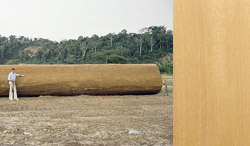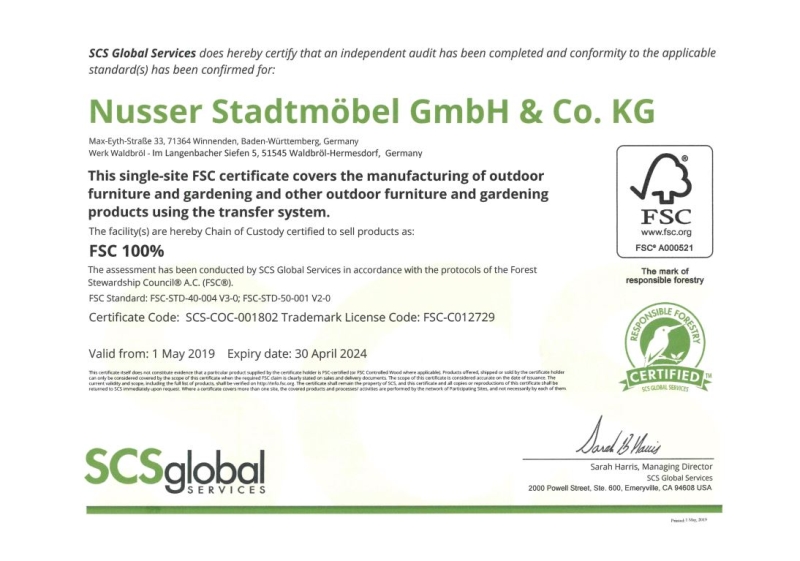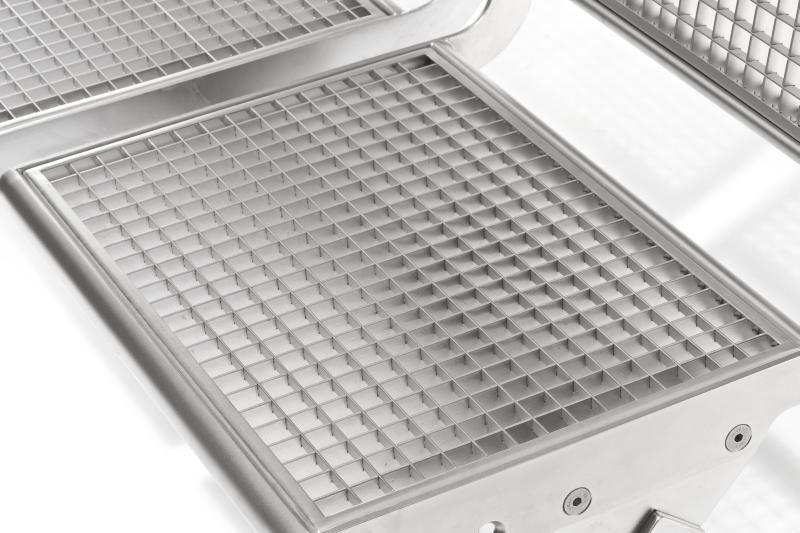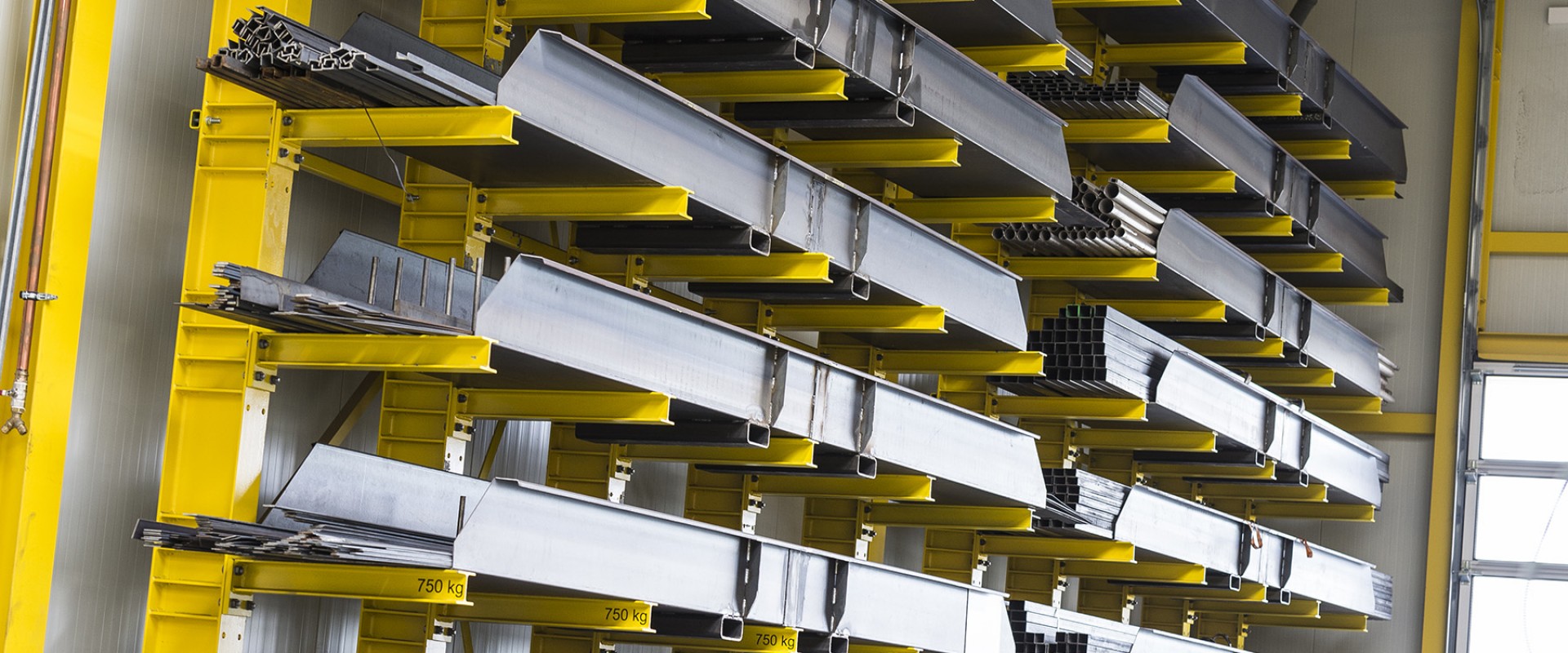Choice of materials

Natural materials
Since our company's founding, we have placed the processing of wood at the center of our activities, while at the same time making efficient use of this renewable resource. Our workshops therefore only process wood from sustainable forestry sources.
The Forest Stewardship Council (FSC®) has been established as a worldwide standard. We have been certified to the FSC® guidelines since 2009. Our FSC® certificate number is SCS-COC-001802 and can only be used by us. Our certificate was most recently extended in 2019 for another 5 years. Annual audits by the FSC® verify that we continue to observe applicable rules.
Our products only use FSC® hardwoods, which are by nature highly weather-resistant and enduring. It is important for us that by using only FSC® certified hardwoods we are making an important contribution toward protecting the environment and promoting sustainable forestry in countries of origin.

We predominantly use the Kambala (Iroko) wood species, 100% FSC ® natural. Kamabla has a durability class of 1-2 . Depending on the location and care, this corresponds to a useful life of up to 25 years.
If you would like to learn more about FSC® and how targeted demand counteracts predatory deforestation and the destruction of tropical rainforests, visit the FSC® homepage at: www.fsc-deutschland.de.
More information is also offered in the video of GD Holz Deutschland at: www.youtube.com/watch?v=Kpsu1Elbm00.
We also use domestic wood species from sustainable forestry management sources on a project specific basis.
We source Douglas fir directly from our doorstep from the Black Forest. This is a rather high-strength coniferous wood species that corresponds to durability class 3. Depending on location and care, this corresponds to a useful life of about 10 years. In addition to resin flow, Douglas fir has a propensity to form knots. These are natural characteristics that we cannot influence and that also do not represent defects.
In addition to Douglas fir, we also use oak on a case-by-case basis, which we likewise source from domestic forestry management sources. In spite of its durability class 2 and a useful life of about 15 to 25 years, oak can only be recommended within limits for outdoor use due to its wood-specific properties. Weathering causes oak to leach tannins, which in turn results in discoloration on adjacent components and floors.
Our standard wood components are left natural since an impregnation with glazes or oils is not required. Moreover, an impregnation also goes hand-in-hand with increased maintenance effort. On an order-specific basis, we can treat wood components with a brown-pigmented, open-pore glaze that is applied in 2 coats using a patented spray-brush method.
The datasheet below provides more information about the durability classes of various wood species.

Engineered materials
Acrylic slats are an engineered material made of 100% recycled PVC plastics as the core and a coating made of acrylic glass. They are an ideal material for furniture in public spaces.
The surface made of acrylic is highly UV light-stable, completely weather-resistant, very hygienic, and dries quickly. A wide range of colors are available. We use dark gray or dark brown for our standard products, in each case with a textured surface.
End-of-life materials can be fully recycled as plastics, which are then converted into materials for new acrylic slats.
Pagwood® is an engineered material manufactured from domestic beechwood. The panel material is made by compressing beech veneer with resin under high pressure. Pagwood® is very hard and weather resistant, is not additionally coated, and requires no special care. It dries off very quickly due to its closed surface. It is therefore ideally suited for park benches in any application.
Steel components are categorically galvanized, which provides the best possible corrosion protection. The resulting surface texture typical for galvanization is occasionally associated with minor waviness. Over time, the surface develops a grayish-matte finish.
Our standard stainless steel products are supplied with a bead-blasted and electro-polished matte finish. This method involves bead blasting the component in a first step with V4A beads, and then electro-polishing the component in an electrolyte bath. As a result, we achieve a uniform and lightly matted surface texture. This also results in better protection against corrosion and dirt. Stainless steel can of course also on request be a equipped with a painted finish.
Many of our products have a factory-applied paint finish. Our standard color is DB 703 charcoal-iron glimmer with a fine-textured finish. However, almost all RAL or DB colors can be supplied.
Powder coating is outsourced to our long-standing partners in the region. We rely on binding specifications to ensure uniform quality. Powder coating involves first cleaning and tempering, and then applying a paint powder onto the electrically charged component. The component is then heated to about 250°C. This creates a highly-durable paint film.
But we also have an in-house wet paint process, which gives us the flexibility to respond to your specific needs and painting requests as required. Wet painting also involves first cleaning, and then painting the component in a wet process with an epoxy PUR enamel.
